by Moe | Oct 24, 2013 | Quotes
Let us tenderly and kindly cherish, therefore, the means of knowledge. Let us dare to read, think, speak, and write. – John Adams

Moe is the founder of GnosticWarrior.com. He is a father, husband, author, martial arts black belt, and an expert in Gnosticism, the occult, and esotericism.
by Moe | Oct 24, 2013 | Apocalypse, History of the Brotherhood
On July 11, 2013; Pope Francis had issued one of the most important Apostolic Letters of our time on the jurisdiction of  Judicial Authorities of Vatican City State in Criminal Matters. This letter was addressed to all the public officials of the Roman Curia around the world, and not just those who reside in the Vatican City State. Pope Francis had ended the letter with, “I establish that this Apostolic Letter issued Motu Proprio will be promulgated by its publication in L’Osservatore Romano, entering into force on 1 September 2013.”
Judicial Authorities of Vatican City State in Criminal Matters. This letter was addressed to all the public officials of the Roman Curia around the world, and not just those who reside in the Vatican City State. Pope Francis had ended the letter with, “I establish that this Apostolic Letter issued Motu Proprio will be promulgated by its publication in L’Osservatore Romano, entering into force on 1 September 2013.”
What this basically means, is that all public officials that are under Roman Curia rule of law will have to comply with this letter. Hence, they will have to simply resign or be fired by the date of September 1st, or they may face international criminal prosecution.
Shortly before and after this letter was released, news about an unprecedented amount of resignations, firings and early retirements in the United States, from some of the most powerful positions in government had started to hit the media like no other time in recent history. The conspiracy news blogs and Youtube videos were the first to start making allegations, that this letter from the Pope and these events in the US are connected.
“Could all these various resignations and firings indicate that the US is under Roman Curia Law, or are these mass resignations and firings just a peculiar coincidence?
Here is a small list of “some of these US public officials” who have resigned, or have been fired around or since the time of this letter on July 11, 2013; (Disclaimer – This list does NOT indicate guilt, but just facts that coincide with Pope’s letter.)
- On the same day of the letter from the Pope dated July 11, 2013, the Federal Reserve Governor, the New York Times announced that Elizabeth Duke would step down effective September 1, 2013.
- News on July 12, 2013 stated that Janet Napolitano, head of Homeland Security will resign effective September 1, 2013.
- Since July 2013, nine senior commanding generals have been fired by Obama, such as the two-star general overseeing the U.S. arsenal of intercontinental missiles that was fired on October 11, 2013
Yes, lot’s of the numbers 11 and 1 here. In the occult, the number 11 is the destruction, judgment and the death of man. It is the first number after 10 at which point the number 11 signifies a new starting point of counting.
WHERE DOES THE POPE GET HIS LEGAL AUTHORITY OVER THE PUBLIC OFFICIALS OF THE WORLD?
The Pope governs the Catholic Church through the Roman Curia. The Roman Curia consists of a complex of offices that administer church affairs at the highest level, including the Secretariat of State, nine Congregations, three Tribunals, eleven Pontifical Councils, and seven Pontifical Commissions.
Curia in medieval and later Latin usage means “court” in the sense of “royal court” rather than “court of law”. The Roman Curia, then, sometimes anglicized as the Court of Rome, as in the 1534 Act of Parliament that forbade appeals to it from England, is the Papal Court, and assists the Pope in carrying out his functions.(Wikipedia)
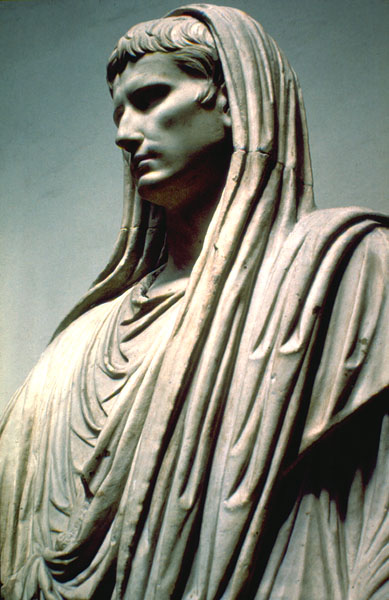 The first high priest of this Age and the first official Roman Pontifex Maximus, or who we would today call the first official Pope of this age, was Augustus Caesar. It was King Lucius who clearly had said, “superior papal authority and dominion is derived from the law of the Caesars.” From the reign of Augustus, all laws made by the Roman Curia at the time ,and all subsequent laws would be incorporated into not only the decisions of the church, but also the countries in which their Catholic Kings and bishops had ruled. Today it is no different from what it was in the time of Augustus; the Pope rules from the top down, and when an edict on law and criminal matters is issued from the Pontifex Maximus, you better believe that all the various entities under the rule of Church will have to simply comply or face criminal prosecution.
The first high priest of this Age and the first official Roman Pontifex Maximus, or who we would today call the first official Pope of this age, was Augustus Caesar. It was King Lucius who clearly had said, “superior papal authority and dominion is derived from the law of the Caesars.” From the reign of Augustus, all laws made by the Roman Curia at the time ,and all subsequent laws would be incorporated into not only the decisions of the church, but also the countries in which their Catholic Kings and bishops had ruled. Today it is no different from what it was in the time of Augustus; the Pope rules from the top down, and when an edict on law and criminal matters is issued from the Pontifex Maximus, you better believe that all the various entities under the rule of Church will have to simply comply or face criminal prosecution.
COPY OF APOSTOLIC LETTER ISSUED MOTU PROPRIO
OF THE SUPREME PONTIFF FRANCIS
ON THE JURISDICTION OF JUDICIAL AUTHORITIES OF VATICAN CITY STATE IN CRIMINAL MATTERS
In our times, the common good is increasingly threatened by transnational organized crime, the improper use of the markets and of the economy, as well as by terrorism.
It is therefore necessary for the international community to adopt adequate legal instruments to prevent and counter criminal activities, by promoting international judicial cooperation on criminal matters.
In ratifying numerous international conventions in these areas, and acting also on behalf of Vatican City State, the Holy See has constantly maintained that such agreements are effective means to prevent criminal activities that threaten human dignity, the common good and peace.
With a view to renewing the Apostolic See’s commitment to cooperate to these ends, by means of this Apostolic Letter issued Motu Proprio, I establish that:
1. The competent Judicial Authorities of Vatican City State shall also exercise penal jurisdiction over:
a) crimes committed against the security, the fundamental interests or the patrimony of the Holy See;
b) crimes referred to:
– in Vatican City State Law No. VIII, of 11 July 2013, containing Supplementary Norms on Criminal Law Matters;
– in Vatican City State Law No. IX, of 11 July 2013, containing Amendments to the Criminal Code and the Criminal Procedure Code;
when such crimes are committed by the persons referred to in paragraph 3 below, in the exercise of their functions;
c) any other crime whose prosecution is required by an international agreement ratified by the Holy See, if the perpetrator is physically present in the territory of Vatican City State and has not been extradited.
2. The crimes referred to in paragraph 1 are to be judged pursuant to the criminal law in force in Vatican City State at the time of their commission, without prejudice to the general principles of the legal system on the temporal application of criminal laws.
3. For the purposes of Vatican criminal law, the following persons are deemed “public officials”:
a) members, officials and personnel of the various organs of the Roman Curia and of the Institutions connected to it.
b) papal legates and diplomatic personnel of the Holy See.
c) those persons who serve as representatives, managers or directors, as well as persons who even de facto manage or exercise control over the entities directly dependent on the Holy See and listed in the registry of canonical juridical persons kept by the Governorate of Vatican City State;
d) any other person holding an administrative or judicial mandate in the Holy See, permanent or temporary, paid or unpaid, irrespective of that person’s seniority.
4. The jurisdiction referred to in paragraph 1 comprises also the administrative liability of juridical persons arising from crimes, as regulated by Vatican City State laws.
5. When the same matters are prosecuted in other States, the provisions in force in Vatican City State on concurrent jurisdiction shall apply.
6. The content of article 23 of Law No. CXIX of 21 November 1987, which approves the Judicial Order of Vatican City State remains in force.
This I decide and establish, anything to the contrary notwithstanding.
I establish that this Apostolic Letter issued Motu Proprio will be promulgated by its publication in L’Osservatore Romano, entering into force on 1 September 2013.
Given in Rome, at the Apostolic Palace, on 11 July 2013, the first of my Pontificate.
FRANCISCUS
Moe is the founder of GnosticWarrior.com. He is a father, husband, author, martial arts black belt, and an expert in Gnosticism, the occult, and esotericism.
by Moe | Oct 23, 2013 | Meaning of Symbols
The meaning of the cross will vary, depending on the type of cross used. For example, when speaking of the biblical cross such as those found in the Old Testament, the cross used by the ancient Jews was modeled after the Greek Tau which is represented in an uppercase English T. An example of this early cross is depicted in this 15th or early 16th century painting below, of Jesus on the Tau from the School of Brugge.
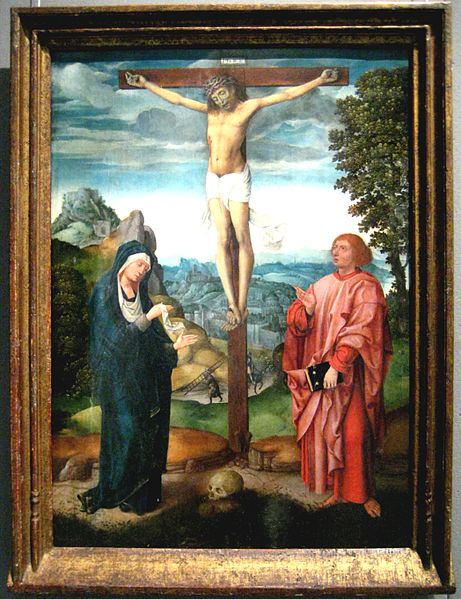
However, when Rome had introduced Christianity in the time of Constantine under the banner of war, the cross was changed to the Greek theta which is the symbol of death, that the Roman Emperors and Catholic Bishops had used as their standard for Christian warfare. Simply put, salvation is not for everyone.
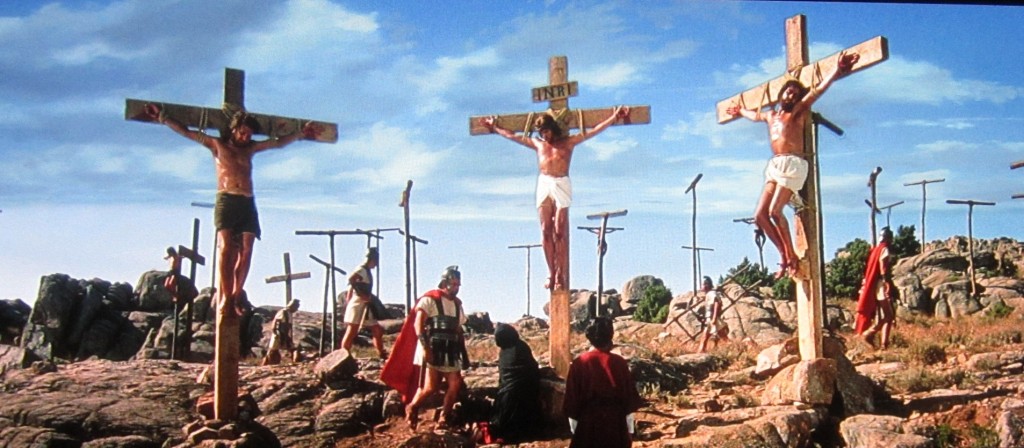
After all, this was and has been an age of intense warfare all across the world, and in order to combat their enemies, the Church would ensure that they would officially symbolize this time with the appropriate ensigns. These facts are confirmed by one of the most important Church Fathers, St. Augustine who had primarily rejected self-defense, but he also advocated it with one exception: when a soldier acts in self-defense and in defense of others. He had considered it a sin, for a peaceful people not to defend themselves such as the Christians when faced with grave wrong. Augustine had said, “Defense of one’s self or others could be a necessity, especially when authorized by a legitimate authority.” He also tells us that the image of Christ and his Cross was the new ensign of Christian Warfare that the Romans had carried before them; being the Ensign or Profession of their Warfare. Hence, the authorized use of warfare under the banner of Christianity and the ensign of the cross was almost always sanctioned by the Church Fathers since the inception of the church.
The first documented use of the Greek theta as the cross and as a symbol of Christian warfare was mainly introduced to the church under the Christian warlord Constantine in the 4th century. It came into use after the Emperor Constantine had dreamed a vision of St. Nicholas, who told him that three men were about to die on charges of necromancy, but they were innocent, and if they were not released, war would desolate the island. Constantine set them free. He also had a dream of Christ who had appeared with a cross in his hand and ordered the ruler to have a standard made like it. Constantine had the cross impressed on the arms of his soldiers and erected large crosses in Constantinople and on the Hippodrome.
Later in the year 629 A.D., after warring with the Persians, Emperor Heraclius enters Constantinople with the cross in triumph after his military victory over the Persian Empire. More history confirms this use of the cross as the ensign of Christian Warfare: Saint Bede had written about the Saxon King Oswald (635 A.D.), who, being in imminent danger in war, erected and offered adoration to a cross, by which victory was secured. (Hist EccL Hi. 2).
33rd degree Scottish Rite, Albert Pike had written in Morals and Dogma, about a ninth century king of the Picts in Scotland, Hungus who before going into battle, had a vision of the cross just like Constantine had 500 years earlier;
A MIRACULOUS tradition, something like that connected with the labarum of Constantine, hallows the Ancient Cross of St. Andrew. Hungus, who in the ninth century reigned over the Picts in Scotland, is said to have seen in a vision, on the night before a battle, the Apostle Saint Andrew, who promised him the victory; and for an assured token thereof, he told him that there should appear over the Pictish host, in the air, such a fashioned cross as he had suffered upon. Hungus, awakened, looking up at the sky, saw the promised cross, as did all of both armies; and Hungus and the Picts, after rendering thanks to the Apostle for their victory, and making their offerings with humble devotion, vowed that from thenceforth, as well they as their posterity, in time of war, would wear a cross of St. Andrew for their badge and cognizance.
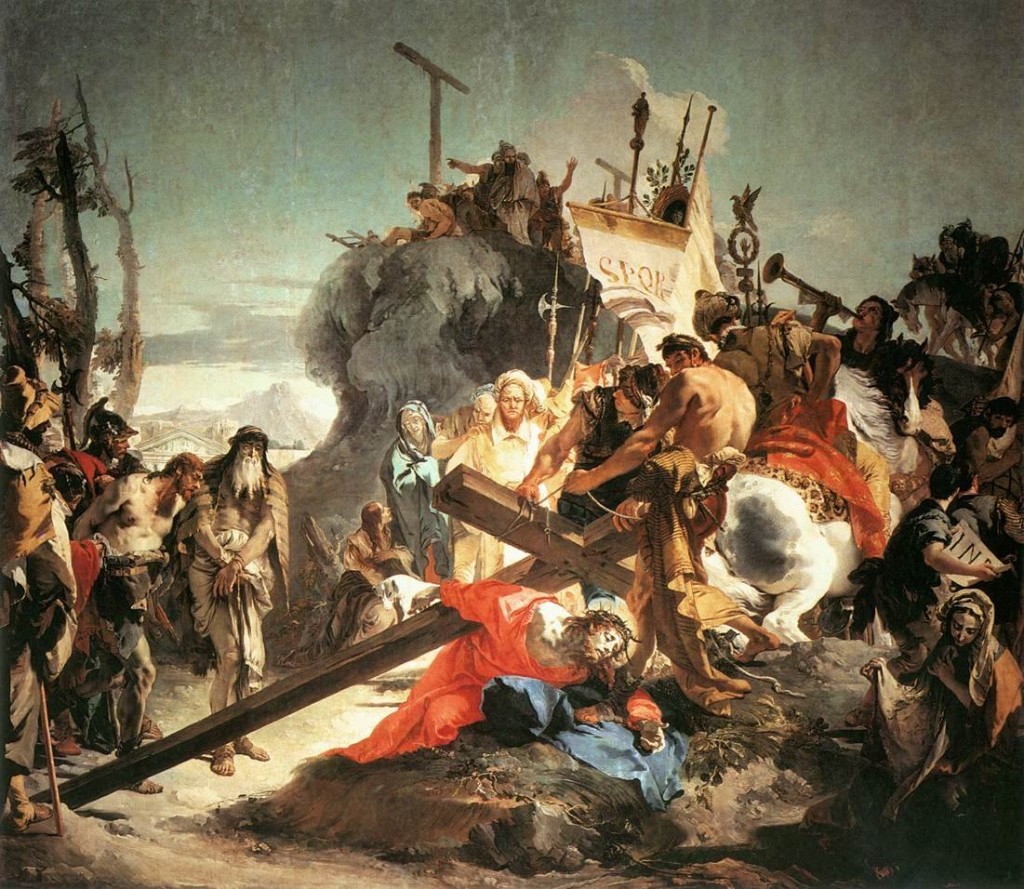
THE TRUE CROSS
The letter Tau, Bede has written as the sign of salvation and of the cross. The Tau is represented by an uppercase Τ and is the 19th letter of the Greek alphabet. The Greek alphabet is derived from the Phoenicians who had represented it with the Phoenician letter taw  . The tau is considered a symbol of salvation due to the identification of the tau with the sign which in Ezechiel 9:4 was marked on the forehead of the saved ones (וְהִתְוִיתָ תָּו עַל־מִצְחֹות הָאֲנָשִׁים “set a mark (tav; after the Phoenician cross-shape on the forehead of the men”), or due to the tau-shaped outstretched hands of Moses in Exodus 17:11
. The tau is considered a symbol of salvation due to the identification of the tau with the sign which in Ezechiel 9:4 was marked on the forehead of the saved ones (וְהִתְוִיתָ תָּו עַל־מִצְחֹות הָאֲנָשִׁים “set a mark (tav; after the Phoenician cross-shape on the forehead of the men”), or due to the tau-shaped outstretched hands of Moses in Exodus 17:11
The cross of the Tau can be found as St. Anthony’s Cross, Old Testament Cross, Anticipatory Cross, Cross Commissee, Egyptian Cross, Advent Cross, Croce taumata, Saint Francis’s Cross,and Crux Commissa. It is usually considered as the symbol of Franciscan orders, due to St. Francis’ love for it, the symbol of the redemption and of the Cross. Fellow Franciscan, Augustine of Hippo is honored all over the world as the Patron Saint for lost articles, and even lost spiritual goods and for his good works. Almost all Franciscan churches have painted a tau with two crossing arms, both with stigmata, the one of Jesus and the other of Francis; usually members of the Secular Franciscan Order wear a wooden τ in a string with three knots around the ankle. (Wikipedia)
THE CROSS OF CHRISTIAN WARFARE
The cross is the lower case t; Greek for [theta which is simply not the same as the letter Tau because it has a completely different meaning and numerical value. Theta is the eighth letter of the Greek alphabet and would represent the value of 9 which is the Son of Man hanging on the cross and is considered the symbol of death. Nine (9) is sacred because it is the “first cube of an odd number (3)” and why Jesus had died at age 33 in the year 33 A.D. He was crucified at Golgatha, the Place of the Skull.
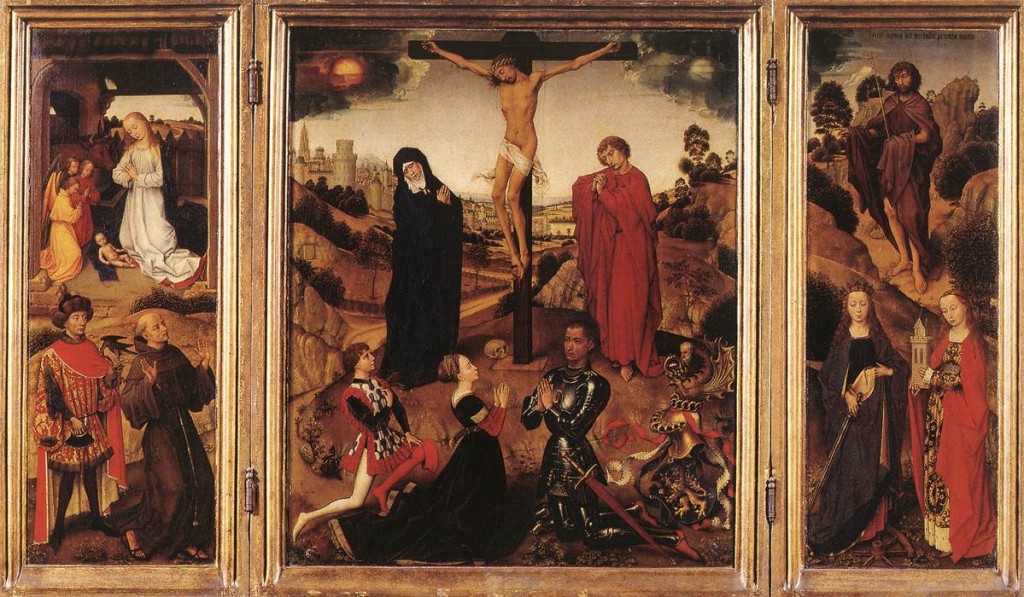
A temple was built there, but later was destroyed and a temple to Venus built upon it.
This is confirmed by Eusebius, who had written the emperor Constantine;
“not without divine admonition,” resolved to uncover the holy tomb. He states that wicked men had covered it over with earth and rubbish, and had erected on the spot a temple of Venus. These were removed, and the tomb and Golgotha laid bare. A magnificent church was built over them, and consecrated in A.D. 335 ( Vil. Constantiii. iii, 2G-33). There can be little doubt that the present Church of the Sepulchre occupies the site of that built by Constantine.
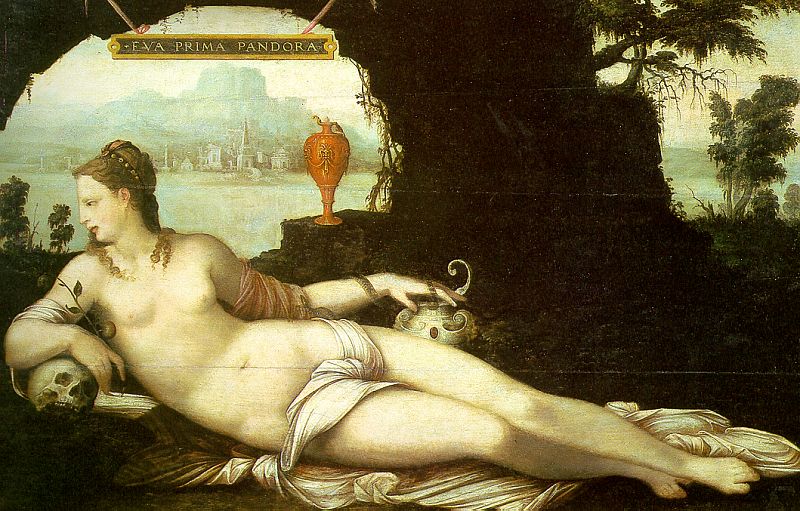
In classical Athens, it was used as an abbreviation for the Greek θάνατος (thanatos, “death”), as it vaguely resembles a human skull. [theta was used as a warning symbol of death, in the same way that skull and crossbones are used in modern times. The most powerful secret college fraternity at Yale University, Skull and Bones uses this symbol and has also pumped out presidents such as George Bush Jr. and many other powerful men who have went on to hold positions of power. It is no secret, that when you hold such power, you often hold life and death decisions in your hands, and in a time of war, these life or death decisions such as going to war or military campaigns are part of what goes along with such power. The same decisions that were made by Alexander the Great, Augustus Caesar, and Constantine.
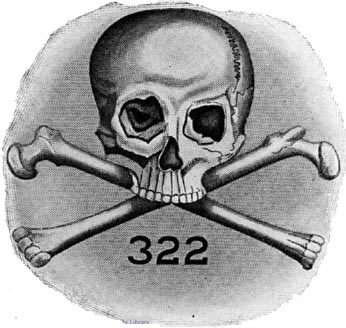
When Bede tells us that letter Tau is written as the sign of salvation and of the cross, he is not talking about the Theta which is the lower case ‘t’, but the Tau which is an uppercase ‘T’. With the symbol of Jesus, St Mark informs us, “With the form of a serpent, He kills the serpent, for the serpent made out of the rod swallowed up the other serpents.” Jesus was crucified on the Christian Cross of Warfare on Friday, April 3, AD 33.
This is why the church believes salvation is not for everyone.
Moe is the founder of GnosticWarrior.com. He is a father, husband, author, martial arts black belt, and an expert in Gnosticism, the occult, and esotericism.
by Moe | Oct 22, 2013 | History of the Brotherhood, Irish History, Meaning of Symbols
The power of the serpent of Egypt was broken on the cross – Justin Martyr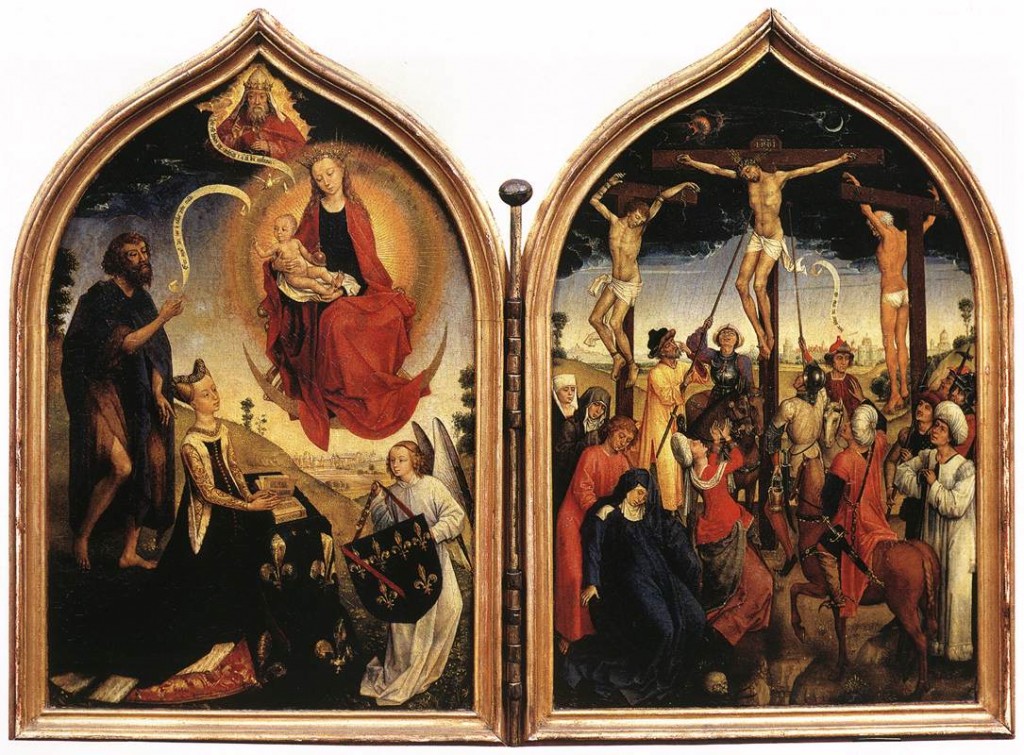
Let it be said, that long before the Romans had given us the images and idols of the Lord and Savior of Jesus crucified upon the cross, the serpent or snake was the chosen image by the ancient wise people of the not so distant past as their savior. In fact, the ancient Romans had used to carry forth the serpent in war, and one of their standards was the serpent on a pole. St. Augustine tells us, that the image of Christ and his Cross was the new ensign of Christian Warfare that the Romans had carried before them; being the Ensign or Profession of their Warfare. Hence as Jesus had said, “I come not to bring peace, but to bring a sword” (Matthew 10:34)
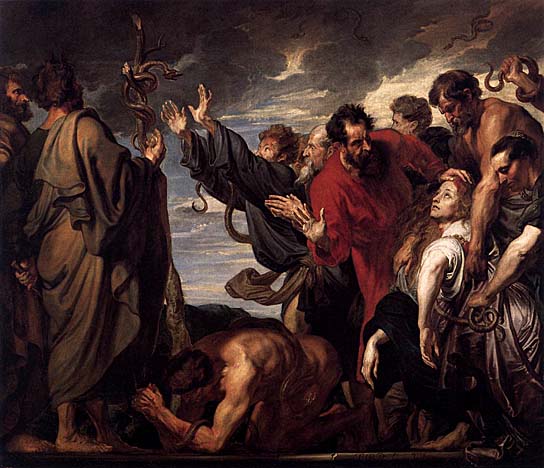 The ancient serpent-god of the Gnostics from the East was Serapis. The various spellings of the name Serapis are, Sor-apis (Σέραπις, Attic/Ionian Greek), Sarapis (Σάραπις, Dorian Greek), Serapin (Greek Ὄφις), or in Hebrew, Seraph. All these names mean ‘serpent.’ The name ‘seraphim’, is the plural form of serpent and is also said to mean, “the burning ones.” Serapis is the Hellenized version of the Egyptian Osiris-Apis.
The ancient serpent-god of the Gnostics from the East was Serapis. The various spellings of the name Serapis are, Sor-apis (Σέραπις, Attic/Ionian Greek), Sarapis (Σάραπις, Dorian Greek), Serapin (Greek Ὄφις), or in Hebrew, Seraph. All these names mean ‘serpent.’ The name ‘seraphim’, is the plural form of serpent and is also said to mean, “the burning ones.” Serapis is the Hellenized version of the Egyptian Osiris-Apis.
“Be ye wise as serpents”
Serapis is the serpent on the cross that was also the precursor to the Christian Christ, who would take the serpents place upon the cross in this Sixth Age under the religion of Christianity. Before the Christian era, the most ancient worship of the serpent was practiced in many areas of the world. The serpent on the cross was still worshiped up to the 7th century in England under the Druids. Tacitus, the Roman senator and historian had said, that Serapis was worshipped as a type of universal deity that represented Jupiter, Osiris, Pluto, and sometimes Jupiter Ammon. The cult of Serapis had originated from the Greco-Egyptian priesthood under the Ptolemies, and the testimony of Pausanias says the temples of Serapis were the most famous at Alexandria, and the most ancient at Memphis.
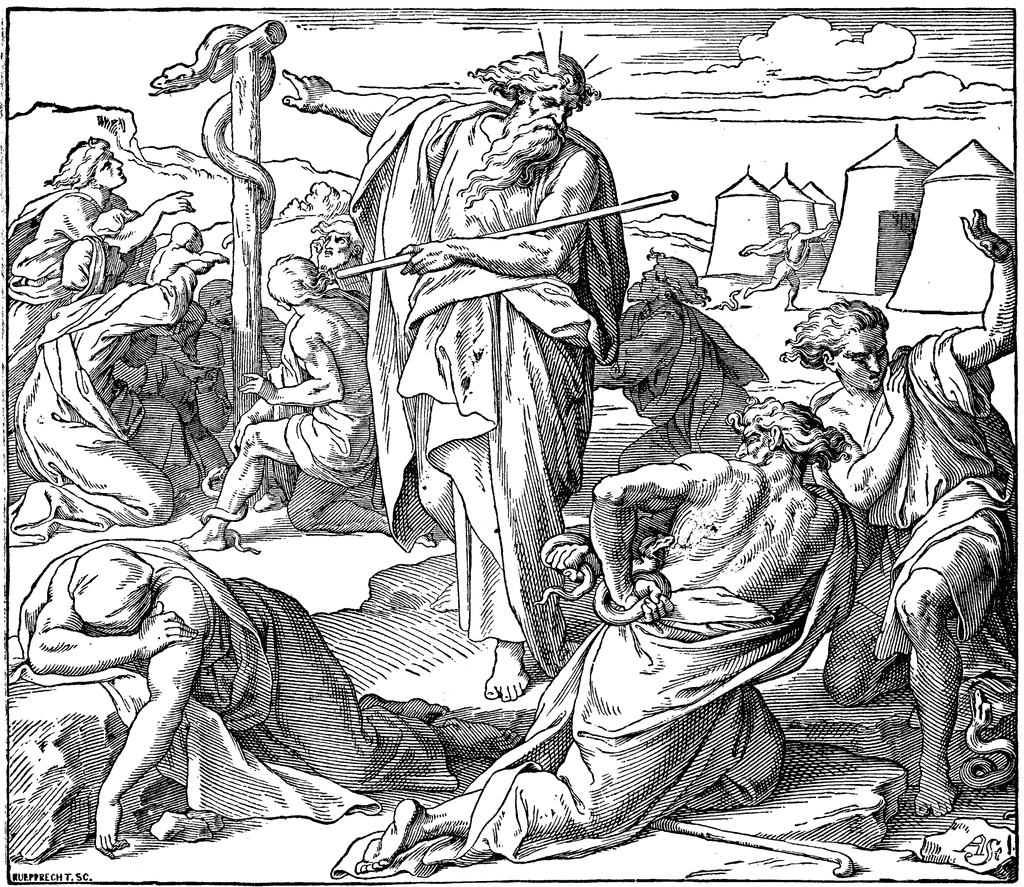 With the symbol of Jesus, St Mark informs us, “With the form of a serpent, He kills the serpent, for the serpent made out of the rod swallowed up the other serpents.” This symbolic event is further explained in St Augustine’s sixth sermon where he said, ” the serpent signifies death, and that Moses’ rod was changed into the serpent because our Lord took upon himself death for us.”
With the symbol of Jesus, St Mark informs us, “With the form of a serpent, He kills the serpent, for the serpent made out of the rod swallowed up the other serpents.” This symbolic event is further explained in St Augustine’s sixth sermon where he said, ” the serpent signifies death, and that Moses’ rod was changed into the serpent because our Lord took upon himself death for us.”
Prior to the 15th century A.D., most people were unlearned and they could neither read or write. The main educated class were usually those fortunate souls who were born into current ruling royal stock. This is why symbols and picture were often the preferred method in which the priesthood and government would educate the people about their religion, gods and history. The Father of English History and Doctor of the Church, Saint Bede who had lived during the 7th century and at the time of this transition from the Old Testament serpent on the cross, to New Testament Jesus on the cross; calls these images, “executed with wonderful art and wisdom.
Some bishops of the church had disagreed with this symbolic method of idolatry type education, such as when the Bishop of Marseilles; Serenus had broken these idols. In the book, “An English-Saxon Homily on the Birth-day of St. Gregory,” By Aelfric (Abbot of Eynsham), he relates the story of Gregory the Great who had declared in his Epistle to Serenus, speaking of those Images which that Bishop had broken;
who know not Letters , may at least be able to read, by looking upon the Walls, what they are not capable of reading in Books. Wherefore, your Brotherhood you’d both preserve them, and hinder the People from adoring them. That sa f1 those who cannot read, may have, from whence to gather some Knowledge of History: And the people be, by no means, permitted to Sin, by the Adoration of a Picture.
Bede had further explained, “A Cross of Silver, and the Image of our Saviour in a Picture. ‘In this manner, Augustine and his Followers are described by Bede, to have come into the Presence of King Æthelbert. They bore a Cross for their Banner, Pro Vexillo: hon pro Adoratione, not for Adoration.” A Latin phrase meaning, “As standards: no honors for Adoration.” Hence, there was no homage or worship given to it, but only as St Augustine had said, “his Cross was the new ensign of Christian Warfare.”
But that you may under« sand the Use of the Images of Stints, and of our “Saviour, which our Saxon Ancestors, and who, writing of the Images of things in Solomon’s Temple, expressed himself thus, If it was lawful to lift up the brazen Serpent upon a Pole, which the Children of Israel beholding, were saved alive: why may we net, by a picture, bring into the Memory of the A Faithfuls that sifting up of our Saviour upon the Cross, by which he overcame Death: or those “his other Miracles, and Cures, by which he wonderfully triumphed over the fame Author of Death Since the fight of these things make oftentimes a deep Impression on the Minds of the Beholders, and to those who are ignorant of Letters, open asit were a kind of lively reading, of the History of our Lord. For picture, in the Greek, is called “(secret for you to find out)”, that is, a writing that expresses the Life.
WHAT IS THE MEANING OF SERPENT WORSHIP AND THE SERPENT ON THE CROSS ?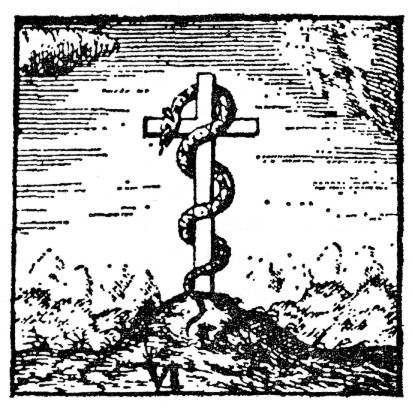
For thousands of years, the serpent or dragon was worshiped by many cultures all around the world. To these ancient people, the serpent had signified wisdom, intelligence, life and rebirth. In a sense, the symbol of the serpent represented Gnosis in the highest sense, which would equate to human godlike status and the equivalent of a Christ or the messiah. However, to modern Christians, the serpent is the devil incarnated and the followers of this ancient wisdom are called Demons. Hence, the 2, 000 year old war between the new savior, Jesus who was the Roman-Jewish messiah of the New Testament (New Law), and the serpent savior who is the prince of Demons of the Greek Old Testament (Old Law).
As Saint John had magically said, “The great dragon was hurled down—that ancient serpent called the devil, or Satan, who leads the whole world astray. He was hurled to the earth, and his angels with him.” – Revelation 12:9
In ancient Greece, the Greatest of all Serpents and the Prince of Good Demons (Angels) was Ophis (Οφιων, Ophiôn, Ophion who had reigned on Mount Olympus with his consort Eurynome). The name Ophis, is Greek for serpent. Author and occultist, HP Blavatsky had written in Isis Unveiled, that the Greeks called Apollo also by the name of Python, which is rendered the same as Ophis, Opis, Oupis, and Oub. Both, Apollo and Ophis were the sons of Zeus who is father of the Gods, father of men, the god of light, truth and prophecy, healing, plague, music, poetry, and more. The followers of Ophis were called the Ophites. Ophis is the Greek equivalent to the ancient Egyptian Apap or Aph-ophis, the Great Serpent who later became Apis, or Epaphus, the Sacred Bull of Egypt. Blavatsky had written, that Apollo and Python, Osiris and Typhon, Christos and the Serpent, are all convertible terms and the followers of this cult that were called Masters of Wisdom, and all Initiates into the Sacred Mysteries, are called Nagas, or Serpents of Wisdom. However, I disagree that Typhon would be considered the same as Apollo, Python, or Osiris.
From the Nile in Egypt, the African plains of Ethiopia, the deserts of Arabia, the highlands of Persia, to the plains of Syria, and to the Phoenicians or Greeks of the Mediterranean Sea and their Holy Island of Crete, to the their biblical tribes of Canaan, the land of Scotia, Ireland, Brittain and to the island of the Culdee Druids in Iona; the ancient priesthoods of these people had always venerated the serpent. One of the symbols of both, Hercules and the Celtic Druid Hu was a serpent.
WHAT HAPPENED TO THE SERPENT ON A POLE?
It wasn’t the Jews who had actually symbolically crucified Jesus to the cross at Golgatha (Place of the skull), but Roman soldiers. St. John tells us clearly, that it was the Jews who had cried out “Crucify Him,” and the soldiers who were Roman that executed the orders of the sentence of death. The Jews would be the instigators, and the Romans the executors, which makes them both accomplices.
What had occurred at this time was simple as I had written above. “With the form of a serpent He kills the serpent, for the serpent made out of the rod swallowed up the other serpents.”
Over time, the Romans who were often at war with these various serpent tribes, had realized that in order to subjugate the world, they had to perform magic and rites that would counter attack the religious rites of the people they had wished to conquer. The main tactical magical method they would employ against these people of the serpent, would be to replace or rename their Gods which they would take ownership of under new names and also reverse symbology, and iconography in which Rome’s chosen Caesar’s, martyred Saints and gods would usurp all other old serpent Gods and demons of the Old Testament.
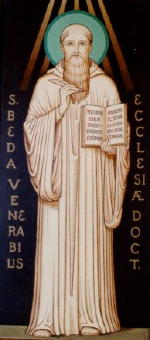 An example of these methods are related to us by the Father of English History and Doctor of the Church, Saint Bede who had lived during the 7th century; in his book, “The Lives of the Abbots of Wearmouth.” Bede tells the story, of how Saint Benedict, in the same time period had made his ‘6th’ and final trip to Rome in order to bring back relics and decorations to Northumbria in Monkwearmouth-Jarrow, for the newly built monasteries of St. Peter and St. Paul which was the main center of Anglo-Saxon learning. The purpose of these relics and art, was to show to people who had visited the monasteries concordance between the Old and New Testaments, how this change from the serpent of Moses to Jesus on the cross as a symbol of Christianity was passed down to us.
An example of these methods are related to us by the Father of English History and Doctor of the Church, Saint Bede who had lived during the 7th century; in his book, “The Lives of the Abbots of Wearmouth.” Bede tells the story, of how Saint Benedict, in the same time period had made his ‘6th’ and final trip to Rome in order to bring back relics and decorations to Northumbria in Monkwearmouth-Jarrow, for the newly built monasteries of St. Peter and St. Paul which was the main center of Anglo-Saxon learning. The purpose of these relics and art, was to show to people who had visited the monasteries concordance between the Old and New Testaments, how this change from the serpent of Moses to Jesus on the cross as a symbol of Christianity was passed down to us.
Soon after the appointment of Easterwine to the abbacy of St. Peter’s, and of Ceolfrid to the direction of St. Paul’s, Benedict had undertaken, and with his wonted prosperity accomplished his sixth and last journey to the city of Rome. Thence he now returned, laden as formerly with a store of ecclesiastical treasures. These, as usual, consisted of a bountiful provision of sacred writings, and an elegant collection of holy pictures. For he brought home on this occasion, the life of our Lord Jesus Christ, described in one series of paintings, with which he beautified the whole interior of the church annexed to the greater monastery, in honour of the virgin mother of God.
For the decoration also of St. Paul’s church and abbey he had procured another set, in which, upon an admirable system, was displayed the concordance between the Old and New Testaments. Of this, to give an instance: Isaac carrying the wood whereon he was ordered to be immolated, and Jesus bearing the cross, on which he died a sacrifice for our sins, are drawn in one piece, and exhibited as corresponding subjects; in a second are paired together, the Son of Man hanging on the cross, and the brazen serpent raised by Moses in the desert.
According to Greek Mythology, eventually the Good Serpent Ophis would be dethroned by his grandfather, the God of chaos 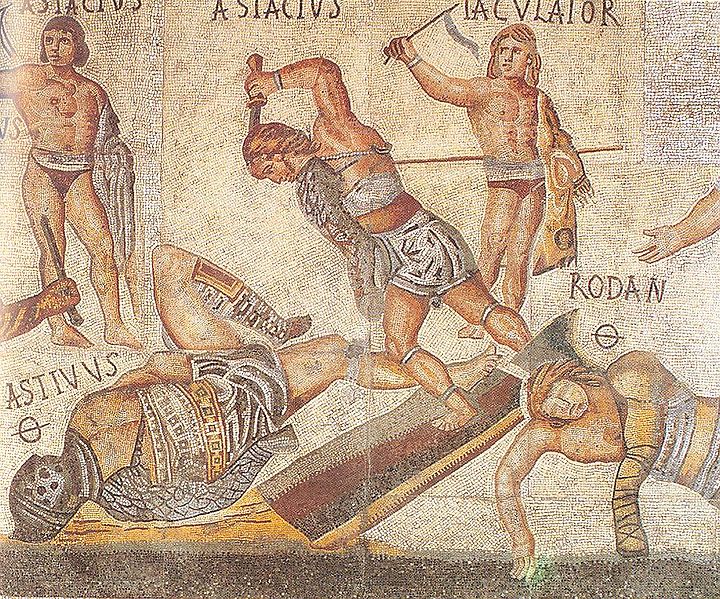 and darkness, Kronos (Saturn or Satan) and the goddess of fertility and war, Rhea (Saturn’s Moon). Hence, the true serpent and dragon of wisdom, Ophis was cast out, and in his place, chaos and darkness would rule under Cronus (Saturn or Satan) and the goddess of fertility and war, Rhea (Saturn’s Moon). This is the reason why, Jesus on the cross is considered by the Fathers of the church, as the standard of Christian warfare and the lower case Greek t, the symbol of death.
and darkness, Kronos (Saturn or Satan) and the goddess of fertility and war, Rhea (Saturn’s Moon). Hence, the true serpent and dragon of wisdom, Ophis was cast out, and in his place, chaos and darkness would rule under Cronus (Saturn or Satan) and the goddess of fertility and war, Rhea (Saturn’s Moon). This is the reason why, Jesus on the cross is considered by the Fathers of the church, as the standard of Christian warfare and the lower case Greek t, the symbol of death.
Based on the testimony of Bede, we can safely date the change of the symbolism, from the Old Testament serpent on the cross, to the son of man, Jesus on the cross for the Anglo-Saxons; it had occurred around the time of Bede in the 7th century, where it had first started in Rome and then later moved to the Anglo-Saxon territories such as Great Britain, England, France, Germany and Spain.
Moe is the founder of GnosticWarrior.com. He is a father, husband, author, martial arts black belt, and an expert in Gnosticism, the occult, and esotericism.
by Moe | Oct 21, 2013 | Apocalypse, History of the Brotherhood
Just as Noah did in ancient times, world-renowned evangelist Billy Graham is sounding the alarm that the Second Coming  is “near” and signs of the end of the age are “converging now for the first time since Jesus made those predictions.”
is “near” and signs of the end of the age are “converging now for the first time since Jesus made those predictions.”
Earlier this month, Israeli Prime Minister Benjamin Netanyahu told the United Nations General Assembly “biblical prophecies are being realized.”
And last week, Rep. Michele Bachmann, R-Minn., claimed the world has entered the last days.
“When you see up is down and right is wrong, when this is happening, we were told this: that these days would be as the days of Noah,” Bachmann said.
The remarks by Graham, Netanyahu and Bachmann come amid a steadily rising wave of public interest in the end times, as demonstrated by recent polls and New York Times and Amazon.com bestselling books such as “The Harbinger: The Ancient Mystery That Holds the Secret of America’s Future,” by Rabbi Jonathan Cahn, and “Four Blood Moons: Something is About to Change,” by Pastor John Hagee.
In September, a poll by the Ventura, Calif.-based Barna Group found 4 in 10 Americans – and 77 percent of evangelical Christians – believe the “world is now living in the biblical end times.”
Now, a new wave of end-times predictions for 2014 and 2015 involving blood moons on Jewish holy days and prophetically significant events on the Shemitah – the ancient biblical year of the Sabbath – are igniting even more interest in humanity’s ultimate fate.
Throw in next year’s reboot of the “Left Behind” film featuring Nicolas Cage and the cinematic destruction of biblical proportions in “Noah,” starring Russell Crowe, and last-days fever is back with a mainstream vengeance.
“I think we’re on the verge of a global awakening in interest in apocalyptic events,” said Paul McGuire, an internationally recognized prophecy expert who is a regular commentator on Fox News and CNN and appeared on two highly rated History Channel specials, including “7 Signs of the Apocalypse.”
Read more at WMD
Moe is the founder of GnosticWarrior.com. He is a father, husband, author, martial arts black belt, and an expert in Gnosticism, the occult, and esotericism.

















